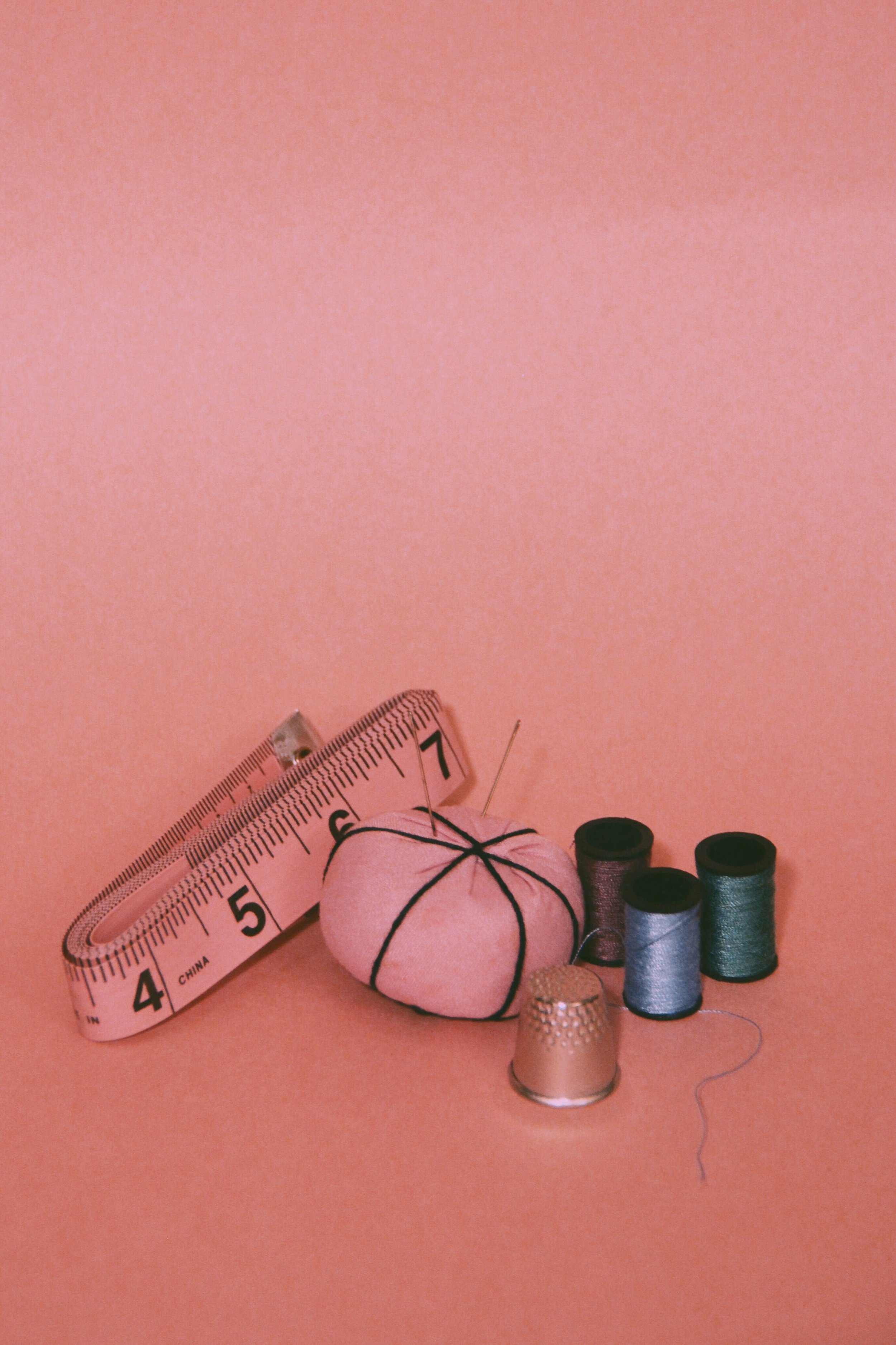The Mindfulness Behind Mending
Inside the top drawer of Antoine Timbers’ ‘18, wooden Piano Row desk, among various household supplies like batteries and extra tubes of toothpaste, is a large red sewing kit. Twenty spools of colored thread are packaged with small red scissors, measuring tape, safety pins, a thimble, buttons, and other supplies necessary for repairing clothing. Visual and media arts major Timbers assures that he has a better kit back home in Virginia, but this is the kit he uses at school.
In today’s consumer culture where consumption and waste have been normalized, a sewing kit in the top drawer of a 21-year-old’s desk is a novelty.
A century ago, or even 20 years ago, this would be a different story. Yet, today, a 2015 documentary titled The True Cost reported that the world consumes 400 percent more textiles than we did two decades ago.
Availability and affordability of clothing today has lent itself to mass consumption. And with mass consumption, comes mass disposal.
According to the Council for Textile Recycling, the average U.S. citizen throws 70 pounds of clothing away annually, contributing to about 21 billion pounds of post-consumer textile waste every year. Perhaps that’s why a sewing kit is so charming today. The sewing kit signifies there’s still sentimental value in textiles—that people still have a desire (and the skill set) to mend and not just replace.
Timbers started wielding a needle and thread when he was 10 years old as a way to avoid unnecessary spending. His grandmother and mother guided him in patching up socks, jeans, and sports jackets.
“You could throw it away, but if that specific thing meant something for you, why would you get a new one?” says Timbers.
Aside from economic repercussions, there’s a ecological consequence to wastefulness. Textile disposal has grown by 40 percent in the last decade and the Council for Textile Recycling isn’t seeing much growth in diversion (only two percent), which means our landfills are getting bigger.
According to Massachusetts’s Energy and Environmental Affairs’ web page, Massachusetts residents dispose of 230,000 tons of textiles every year and 95 percent of the material (cloth, leather, and rubber) could be reused or recycled.
Writing, literature, and publishing major Danika Frank ‘18 started mending her freshman year in college when her black Jansport backpack ripped the night before moving to Emerson.
After watching a YouTube tutorial, Frank says, “I had to sew the arm strap back on and then patched a tear in the front pocket with some cute band patches I bought so it could just look cool.”
Frank has been wearing a pair of torn-up Dr. Martens for eight years. She finds character in imperfections that come from wear and tear and mending.
“Unless something is beyond repair, I’ll hold onto it,” says Frank. “Plus, I’m really into punk clothing and culture, so really, the patches, stitches, and safety pins are kinda cool.”
DIY became a “trend” this past decade, and with the help of blogs and websites such as Pinterest, more people can learn resourcefulness.
Pinterest can teach anyone with Wi-Fi and a little patience to remove the snow salt stains from suede boots by applying a water and vinegar mixture with a toothbrush. Or they can learn how to cover an ugly logo by sewing a patch over it. The power to reinvigorate and repair without spending money can be life-changing, or at least wardrobe-changing.
“Unfortunately, handiwork isn't really appreciated or taught much anymore,” says Frank. “On one hand, it's great that we're no longer pushing kids, young girls especially, to do just housework-based things and are encouraging more cerebral skills, but at the same time, people have definitely lost a sense of practicality.”
Marisa Dellatto ‘18, is another student utilizing her tending skills. The journalism major recently purchased an oversized Italian-made olive green jacket from Emerson’s Free and For Sale Facebook shopping group. It was practically love at first sight.
The patterned silk lining inside was all torn and it was missing buttons, but Delato says, “I’d rather spend the time to resew than not have it at all.”
“I just have your basic sewing kit that you buy at CVS and yarn,” says Dellatto, who has a tendency to buy worn-out clothes at thrift stores and fix them up later.
“Making stuff just takes time,” says Timbers. “A lot of people either don’t know how to do it or don’t give it the time.”
Perhaps the larger issue is that people today don’t care enough about their clothing to restore them. The world is full of new clothing, after all. Right?
Clothing, like plants and relationships, needs tending. When clothes are not given the attention they need to be their very best, they’ll fall apart, much like a deprived succulent.
Frank says, “I think we need to help people realize they can absolutely learn these skills and it would make such an impact, and not just in their own life.”
Photo by: John Huszagh

